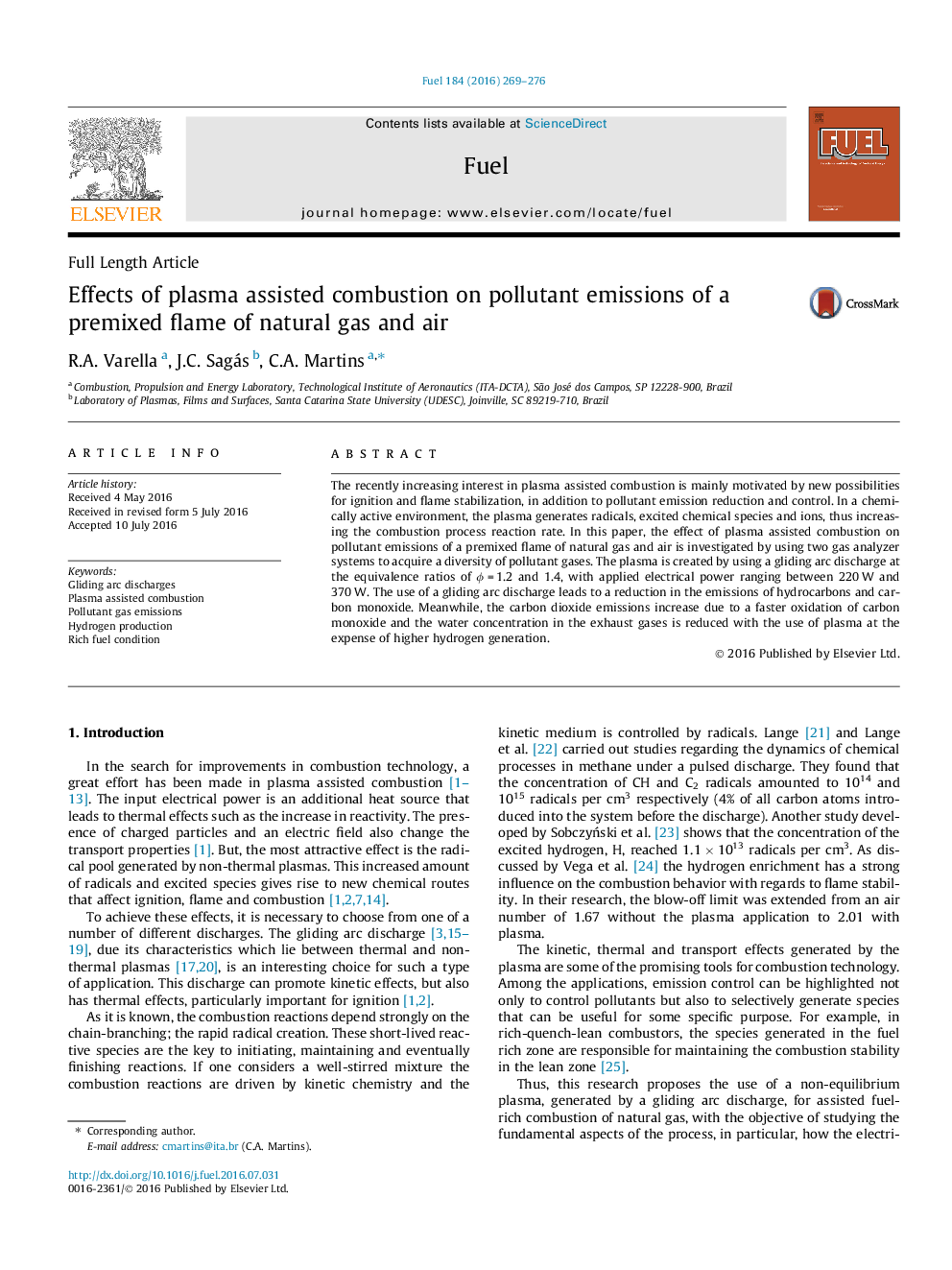| Article ID | Journal | Published Year | Pages | File Type |
|---|---|---|---|---|
| 6633006 | Fuel | 2016 | 8 Pages |
Abstract
The recently increasing interest in plasma assisted combustion is mainly motivated by new possibilities for ignition and flame stabilization, in addition to pollutant emission reduction and control. In a chemically active environment, the plasma generates radicals, excited chemical species and ions, thus increasing the combustion process reaction rate. In this paper, the effect of plasma assisted combustion on pollutant emissions of a premixed flame of natural gas and air is investigated by using two gas analyzer systems to acquire a diversity of pollutant gases. The plasma is created by using a gliding arc discharge at the equivalence ratios of ÏÂ =Â 1.2 and 1.4, with applied electrical power ranging between 220Â W and 370Â W. The use of a gliding arc discharge leads to a reduction in the emissions of hydrocarbons and carbon monoxide. Meanwhile, the carbon dioxide emissions increase due to a faster oxidation of carbon monoxide and the water concentration in the exhaust gases is reduced with the use of plasma at the expense of higher hydrogen generation.
Related Topics
Physical Sciences and Engineering
Chemical Engineering
Chemical Engineering (General)
Authors
R.A. Varella, J.C. Sagás, C.A. Martins,
